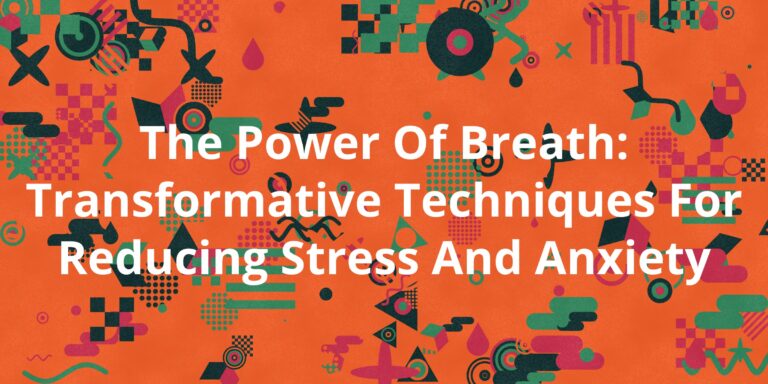Breathe Your Way to Calm: Master the Art of Stress-Reducing Breathing
Stress is a normal part of life, but too much stress can take a toll on our mental and physical health. One effective way to manage stress is through breathing exercises that help calm the mind and relax the body. In this article, we will explore the art of stress-reducing breathing and provide tips for incorporating it into your daily routine.
The Connection Between Breathing and Stress Reduction
Breathing is an essential part of life, and it’s also a powerful tool for reducing stress. When we are stressed, our breathing often becomes shallow and rapid, which can exacerbate feelings of anxiety and tension. By slowing down our breathing and focusing on our breath, we can activate the body’s relaxation response and reduce stress levels.
Types of Breathing Exercises for Stress Reduction
There are many different types of breathing exercises that can help reduce stress, but some of the most effective include:
1. Diaphragmatic breathing: This type of breathing involves expanding the diaphragm and filling the lungs completely with air, then exhaling slowly through pursed lips. By focusing on the movement of the diaphragm, we can slow down our breathing and activate the body’s relaxation response.
2. Belly breathing: This type of breathing involves placing a hand on the belly and feeling it rise and fall with each breath. By focusing on the sensation of the belly moving, we can slow down our breathing and reduce stress levels.
3. Alternate nostril breathing: This type of breathing involves alternating between breathing through the nose and mouth, while also tapping one finger on the tip of the opposite thumb. By focusing on the sensation of the breath entering and leaving the body, we can calm the mind and reduce stress levels.
4. Ujjayi breathing: This type of breathing involves constricting the back of the throat and producing a soft, humming sound with each breath. By focusing on the sensation of the breath and the sound it produces, we can activate the body’s relaxation response and reduce stress levels.
Incorporating Breathing Exercises into Your Daily Routine
Breathing exercises for stress reduction can be done anywhere, at any time. Here are some tips for incorporating them into your daily routine:
1. Set aside a few minutes each day to practice breathing exercises. You can do this while sitting or lying down, and you can choose the type of breathing exercise that works best for you.
2. Use breathing exercises as a tool to manage stress throughout the day. If you start to feel anxious or tense, take a few deep breaths and focus on your breath.
3. Combine breathing exercises with other relaxation techniques, such as meditation or yoga, to enhance their effectiveness.
4. Make breathing exercises a regular part of your self-care routine. Incorporate them into your daily routine along with other activities that promote relaxation and wellbeing.
Conclusion
Breathing exercises are a powerful tool for reducing stress and promoting relaxation. By slowing down our breathing and focusing on our breath, we can activate the body’s relaxation response and reduce feelings of anxiety and tension. Incorporating breathing exercises into your daily routine is a simple and effective way to manage stress and improve your overall wellbeing.



